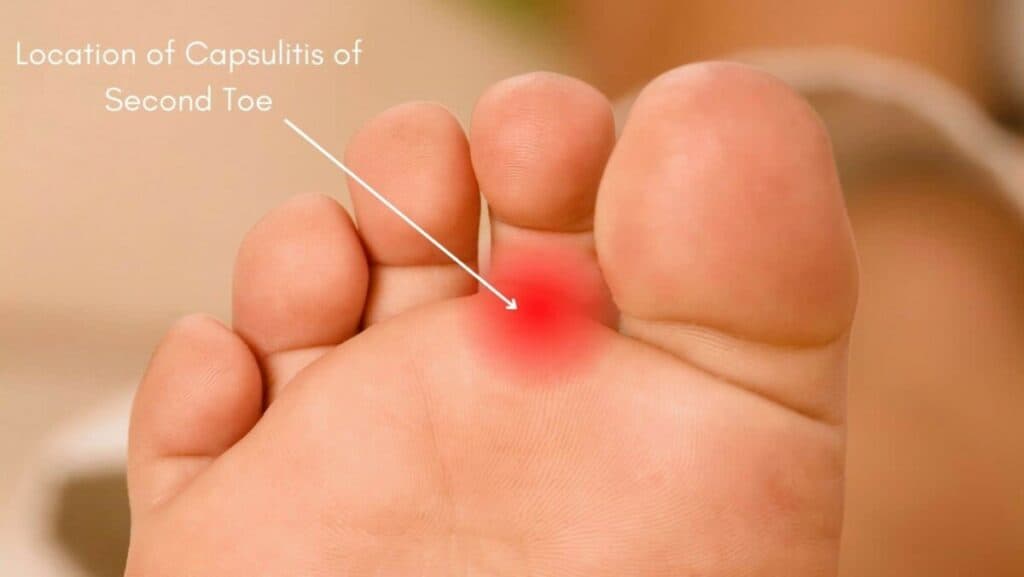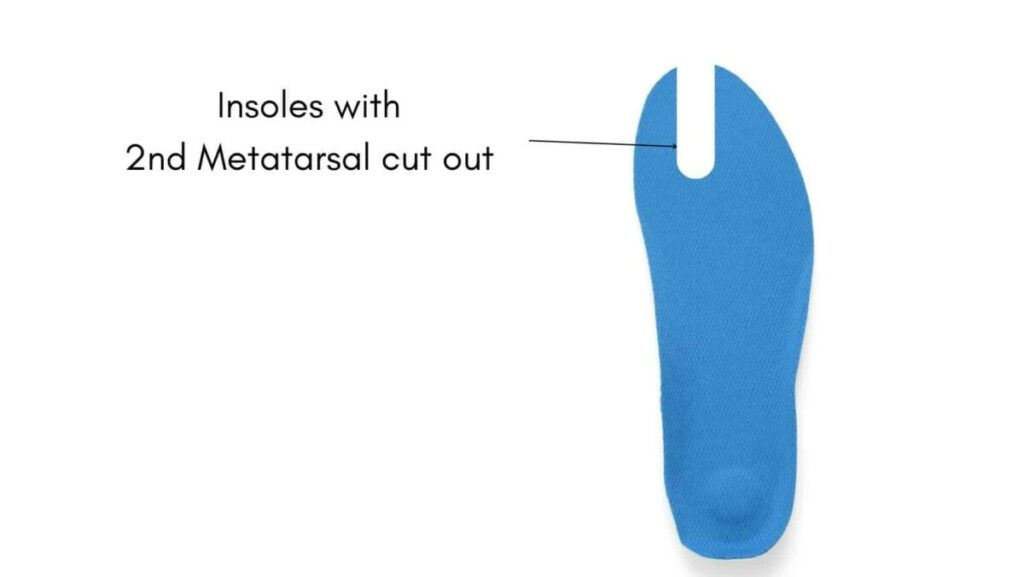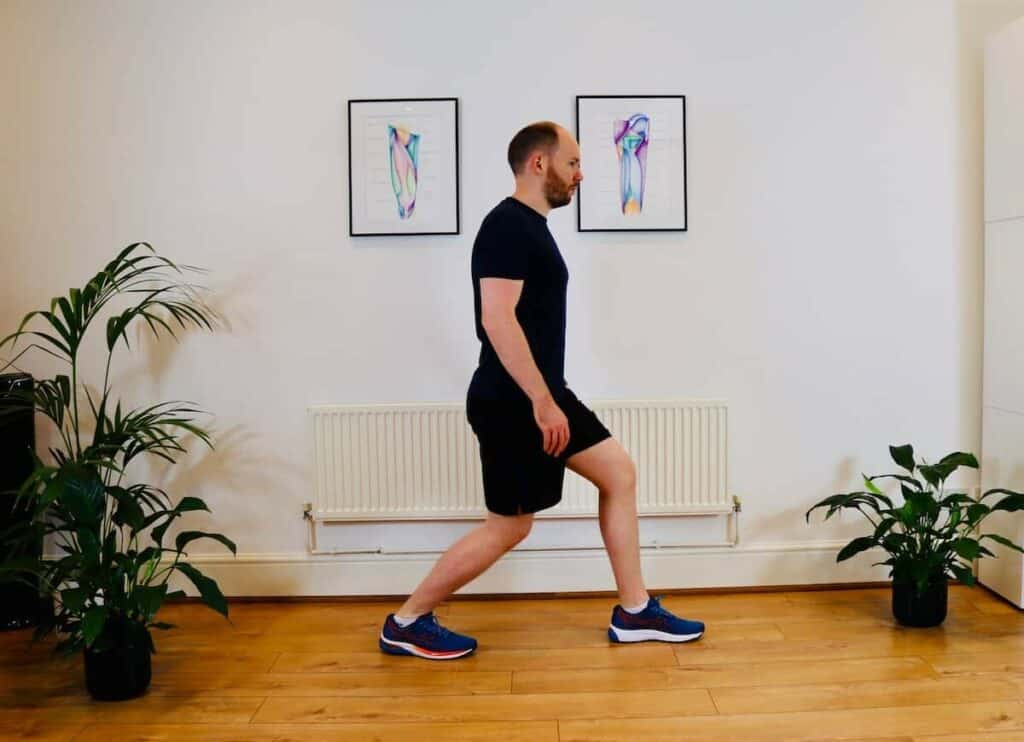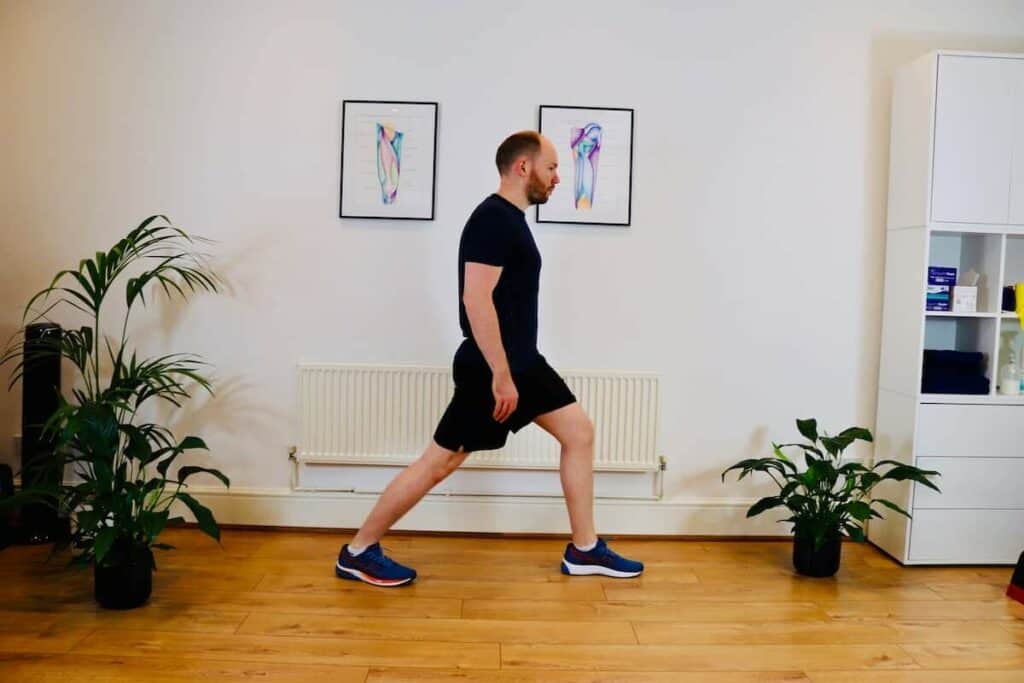Capsulitis of the Second Toe
- Best Asics Shoes for Flat Feet - October 25, 2024
- Best Running Shoes for Flat Feet - October 22, 2024
- Posterior Tibial Tendonitis - October 21, 2024
Anatomy
There are five toes in the foot, and the second toe is the longest. It plays a vital role in the structural integrity of the foot, and where the 2nd metatarsal meets the phalangeal bone, it is known as a metatarsophalangeal joint (MTPJ).
The MTPJ of the second toe is a hinge joint, and around this joint is a capsule that consists of thick connective tissue, synovial fluid and ligaments, providing stability to the joint. The second metatarsal bone is subjected to a high bending moment with a force of about 45% body weight acting on its head.
It is possible to have Capsulitis of the middle and fourth toes, but it is more common in the second toe.
This article will explain the symptoms and risk factors associated with this condition and the best treatment recommendations.
Symptoms
In an acute episode of Capsulitis of the Second Toe, there is swelling on the ball of the foot, with patients often describing a pebble or stone in their shoe.
Symptoms are irritated by walking in high heels, tight-fitting shoes, or on uneven surfaces.
Risk factors include impact activities such as running, skipping, and ballet, which can irritate Capsulitis symptoms.
Symptoms should improve with rest, but there may be constant pain in severe cases, even when non-weight bearing.
There may be stiffness first thing in the morning when you walk after getting out of bed.

Causes
- Longer Second Toe than First Toe
- Bunions can cause a reduced range of motion at the forefoot and place additional stress on the second metatarsal
- Abnormal Foot Mechanics
- Repetitive overload from squatting down, running, Jumping
- High heels and poorly fitted shoes
- Obesity can lead to extra stress on the forefoot.
- Hammertoes can lead to a drop in the metatarsal heads, causing excess pressure.
- Tight calf muscles can lead to excess pressure on the forefoot.
Diagnosis
A foot specialist clinician can diagnose Capsulitis of the Second Toe based on a clinical interview and a Physical Examination.
An important part of the physical examination is ruling out other conditions that cause pain in the ball of the foot, such as Morton’s Neuroma or a fracture. We would expect there to be pain on palpation of the second MTP.
It is not unusual for a clinician to refer for imaging to confirm the diagnosis. An ultrasound or an MRI are the most effective scans to identify swelling of the capsules while ruling out other conditions in the forefoot.
An X-ray can rule out other conditions, but it cannot diagnose Capsulitis of the Second Toe.
Treatment
As capsulitis is primarily an inflammatory condition, if you have received an appropriate diagnosis from a health care professional it can be worthwhile trying a home treatment in the first instance.
Home Treatment
- Icing and rest: Icing for 15-20 minutes on the underside of the foot 4-5 times daily can help reduce pain levels and swelling in the MTP joint. Resting from impact activities and avoiding narrow shoes or high heels can make a substantial difference in pain levels.
- Anti-inflammatories, such as ibuprofen, can reduce inflammation levels and pain, but you should consult your GP before taking any.
- Metatarsal pads or off-the-shelf insoles can reduce pain levels by altering force transmission when walking.
Physiotherapy
Taping is an effective method of pain relief for Capsulitis which involves a ribbon taping method to provide resistance from toe extension.
Stretching exercises of the calf muscle can be highly effective at reducing the speed of weight transfer onto the forefoot when walking or running. Strengthening and stability exercises can help control any excess pronation moments that may contribute to an overload of the Second MTP joint.
Strengthening exercises of the Flexor Hallucis Longus, Posterior Tibial Tendon and short intrinsic muscles of the foot can be helpful.
Advise from your therapist on the best shoes for Second Toe capsulitis can provide pain relief alongside a custom insole. In a minority of cases, a corticosteroid injection may be recommended to reduce inflammation in the joint; in severe cases, a period of 2 weeks is recommended in a walker boot followed by 4-6 weeks of Physical Therapy.

Exercises
Standing Gastrocnemius Stretch
- Stand upright with the affected leg behind you
- Keep the knee straight on the leg behind with a slight bend on the knee in front.
- Move forward on the front leg while keeping both heels on the floor
- Stop moving forward once you feel a stretch on the back leg
- Hold for 45 seconds
- Repeat 3-4 times daily.
Soleus Stretch Standing
- Stand upright with the affected leg behind you
- Bend the back leg while keeping your heel on the floor
- Stop and hold when you feel a pull on the back of your leg
- Hold for 45 seconds
- Repeat 3-4 times daily.

_________________________________________________
We are specialists in treating foot conditions, and you can see one of our Foot and Ankle Specialists in our clinic in Fulham, South West London.
Related Articles
Foot Pain Chart – Bone Spur on Top of the Foot – Insoles for Morton’s Neuroma
Feel Good, Move Well, Be Better

